Steve
gamer level 6
6940 xp
6940 xp
followers
2
2
Use my invite URL to register (this will give me kudos)
https://boardgaming.com/register/?invited_by=gamerguy
profile badges
recent achievements

Gamer - Level 6
Earn Gamer XP to level up!
Earn Gamer XP to level up!

I'm a Gamin' Fiend!
Claim that you have played a game today by clicking the "Played Today!" button on a game page 200 times.
Claim that you have played a game today by clicking the "Played Today!" button on a game page 200 times.

Tomahawk
Explore select games by completing a series of exploration actions. learn more »
Explore select games by completing a series of exploration actions. learn more »

Explorer - Level 3
Earn Explorer XP to level up by completing Explorer Quests!
Earn Explorer XP to level up by completing Explorer Quests!





















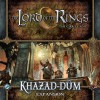



































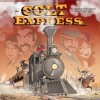






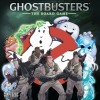

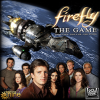

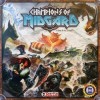









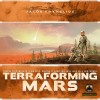















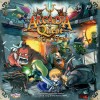









































Pandemic: The Cure
Pandemic has long been near the top of many gamers’ cooperative lists, as it makes a wonderful entry level game and there’s not fighting. There’s also no dice in the game. It also does require quite a bit of space and time to play Pandemic. So what’s a gamer to do if they don’t have a lot of space or time? Zman answered this by making Pandemic the Cure. So what’s the difference between it and the original; and is it worth buying?
The first difference is that there’s no board so to speak in this game. I mean, there’s a ring that you track the infection rate and epidemics on, and there are circles representing the continents, but it’s not a map board like the original. The good thing about this is that it results in saving lots of space to play the game. It’s a nice tight circle that you can put the continents quite close to the fairly small ring, and so you don’t need much space to play. There’s also not a lot of cards. There are the event cards you can choose, but this game is largely determined by the dice, most of which are in a bag. This is one of the other good points. This game is very quick to set up. All the parts are easy to place out, pull some dice, and while the rind does split into two pieces, you can actually put the ring back in the box in one piece if you so choose. Obviously, it may come apart in transport, but you can in theory.
Gameplay is fairly simple, though by no means is this game easy. As in the original, you have several different roles, which have different specialties. Each has their advantages and uses, pretty similar to what they did in the original. They have custom dice they roll to determine what they can do, reflecting their roles. As the continents are set up in a circle, moving between them is moving between adjacent circles, unless you can fly, in which case you can move to any location. To determine where the infection spreads, it’s not always concentrated in areas that are already infected. To put diseases out, you roll dice and that’s where the diseases go. The dice color corresponds to the various continents, like the original, so you’ve got a rough idea of where these diseases are going to land, but they can land in any location that matches their color. These disease dice aren’t all bad, however. If you roll a cross on them, then instead of spreading disease they give you the ability to buy the cards to help you. This, unfortunately, is quite random, as I’ve played games where we were overflowing with crosses, and there were others where they just never came up. You can probably guess the times we won and when we lost. The other problem this causes is that instead of several cities across a continent to absorb the disease, there are SIX locations; so where you could use the cities to have lots of diseases in the original, here they add up FAST! More than once this has led to epidemics adding up VERY quickly. For this reason, I find this game much easier with 3-4 players. Having the extra roles out there, and players to move around, makes things much easier. When I’ve played with only myself and one other, we lost almost every time. We didn’t win every time with 3-4, but then I felt I could play to win, as opposed to how close would we get to winning. One nice thing is that with either player setup, it’s quite fast to play…just with a different usual outcome. It’s definitely quick enough that if I lose, I’m not feeling tired of it, and am willing to immediately give it another go.
Regarding the components, they are for the most part good. The dice are of excellent quality and easy to read, and the hard plastic will stand up to repeated use. The cards have a good feel to them. My main complaint on this front is the markers for the diseases and epidemics don’t fit too well in the holes. The holes are too tight, and I just feel that I’m going to accidentally snap them one of these times trying to force them in. I definitely like the size of the components. This game is very portable. The box is actually quite a bit larger than it needs to be, and you could carry it in a smaller bag if you had to for portability reasons. That’s another reason to consider this game if you just can’t play Pandemic for whatever reason.
So, should you pick up this game? Yes! I wouldn’t quite call it a filler game (unless the dice really hate you that day), but it’s nice and quick and portable. It’s simple enough to teach to new or non gamers and get them interested, but also enough to hold the interest of veteran gamers. For those who want quick setup and teardown in a Pandemic game, and love to chuck dice, this is for them! I know I’ve never turned it down!